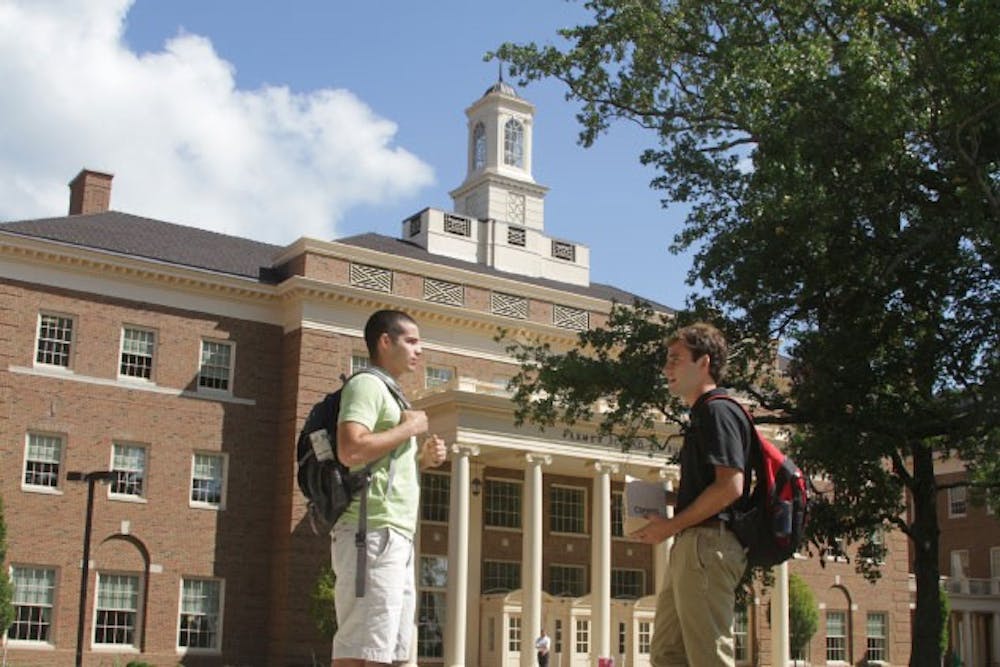
(SCOTT ALLISON | The Miami Student)
The Farmer School of Business (FSB), which received a silver status from the Leadership in Energy and Environmental Organization (LEED) on March 25, uses about half the amount of energy used by similar buildings on campus, according to Tony Ferraro, energy management engineer at Miami University.
Ferraro said FSB uses about 59.7 kBtu per square foot, while the Psychology Building uses 113.6 kBtu per square foot. Partially because it operates 24 hours daily, he said, King Library uses 125 kBtu per square foot.
Ferraro cites several factors in the level of efficiency of FSB, including higher quality windows, more insulation, fans that change output depending on the load of the building at any given time and other control strategies.
According to John Seibert, FSB project architect and manager, it takes a lot of extra planning and hard work to make sure that Miami students are studying in a more eco-friendly atmosphere.
"We had to get a group of architects and engineers across the country to help with the design," Seibert said.
According to Seibert, having LEED certification as a goal not only made it challenging for the architects, but it significantly raised the cost of the building as well.
The project budget needed to be increased 1 to 2 percent in order to make it possible. About $300,000w was needed in order to reach silver status. Of that, $152,000 was needed to bring in Michael Senger, a LEED accredited professional.
Ferraro said it will take quite a bit of time to make up the additional cost of the energy saving features of the building through annual utility savings, but, "These buildings are built to last fifty to sixty years."
Alan Oak, assistant dean of external relations at FSB, said he felt LEED certification was important and necessary.
"(This generation of students) is going to have to deal with sustainability issues far more rigorously than has been in the past," he said.
Enjoy what you're reading?
Signup for our newsletter
Sophomore Kevin Komperda agreed.
"Saving energy is a very important ideal that Miami students cherish," he said. "It means a lot to us that they put more money into the construction of this building to make sure our generation will still have the resources that we need later on in life."
Ferraro said the university's master plan to renovate housing and dining facilities over the next 20 years will make the renovated buildings more efficient.
"They'll probably have more square footage, but their energy use may be the same or less," he said.
Ferraro said another cost-cutting idea that developed recently is the concept of having student group meetings and special events in the most efficient campus buildings like FSB and the Engineering Building.
He said Harrison Hall, where Associated Student Government holds their weekly senate meetings, probably uses twice as much energy per square foot as FSB.
He said his department is working with the Office of the Registrar to save money and energy by changing the locations at which students meet.
Seibert said although the FSB may be the only building that is certified, "(Miami) has been using all of the energy efficient principles for a decade in the other buildings."
Seibert said he expects more LEED certified buildings in the future.
"We will see the next LEED certification with our Bicentennial Student Center," he said.




